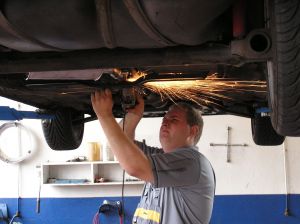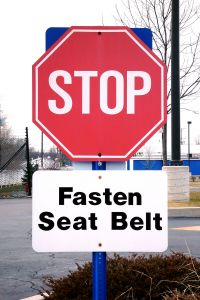Car insurance companies are supposed to cover you in the event that you are involved in an accident and suffer injury or damage to property. Unfortunately, time and again it has been clearly demonstrated that car insurance companies are not on the side of insured drivers when it comes to paying claims and making sure that drivers don’t suffer serious financial loss in the wake of a collision. 
Our Boston car accident lawyers know that insurance companies try many tactics to try to pay out as little as possible after a car wreck. This is true whether you are making a claim with your own auto insurer or whether you are making a claim with the auto insurance company that represents another driver responsible for your collision. Recently, however, the Boston Globe published an article indicating one specific way that insurance companies are lowballing insureds. Unfortunately, these insurance companies are doing something that could be dangerous.
Insurance Companies May be Endangering Drivers
According to the Boston Globe, many insurance companies are forcing insured drivers to use salvage parts or generic parts to repair their vehicles after an accident. This saves the insurance company a lot of money since using a salvaged part can be between 20 and 60 percent cheaper than the cost of a new part.
Unfortunately, salvaged parts and generic parts are not necessarily the same quality as new parts and many car manufacturers including Ford and General Motors discourage the use of either salvage parts or generic copies of manufacturer parts. Car companies, consumer advocates and repair shop owners all argue that replacement parts that don’t come direct from the manufacturer may not fit correctly or match the performance of new, licensed auto parts.
This means when an insurance company mandates that salvage or generic parts are used, the car may not operate as well and may be less safe for the driver and passengers in the future. The car will also lose some of its value as a result of the salvage parts, since vehicles that use salvage parts may be worth an average of 10 percent less. While the decline in the value of a car is annoying, it is the danger to the driver and passengers that is the real concern when salvaged or generic parts are used. In fact, as the Boston Globe points out, it is very clear that these parts are more likely to fail.
If the salvage parts do fail, this could cause another accident to occur, potentially endangering the driver of the car as well as others who are affected by the crash. This is an unacceptable risk just for insurance companies to save money on paying out claims, especially since insured drivers pay insurance premiums specifically to get coverage so they are protected in the event of a crash.
In Massachusetts, the law mandates that insurance companies must tell customers if salvaged parts are being used to perform repairs. Unfortunately, insurance companies tend to bury this information in stacks of papers and when they send insureds to auto body shops to get cars fixed, the shops may use salvaged parts without specifically pointing this out to drivers. A driver thus may not know that his car has sub-standard parts, despite the fact that Massachusetts laws say he has to be told.
This type of behavior by insurance companies is yet another reason why you need a legal professional on your side any time you are dealing with a car insurance claim.
Continue reading
 Boston Car Accident Lawyer Blog
Boston Car Accident Lawyer Blog










